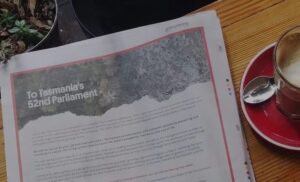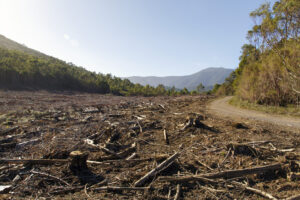Tasmania’s native forests are globally recognised for their unique species and their conservation value. They are also some of the most carbon dense forests on the planet.
Emissions from native forest logging in Tasmania have been estimated at 4.65 million tonnes of CO2 equivalent per year, making it the highest emitting sector in the Tasmanian economy. The reduction in native forest logging since 2011 has been a major factor in the state’s achievement of negative greenhouse emissions, along with hydroelectricity.
This short paper answers a range of questions about native forest logging in Tasmania, such as how many people work in native forest logging? Does Tasmania log more native forest than other states? And does native forest logging make money for Tasmania?
Add your name to the petition to protect Tasmania’s native forests.
Related documents
Between the Lines Newsletter
The biggest stories and the best analysis from the team at the Australia Institute, delivered to your inbox every fortnight.
You might also like
Open Letter to the Tasmanian Government
The Australia Institute and 30 other organisations from around Tasmania have published an open letter with 10 asks for the environment from whomever forms Tasmania’s next government. When cross-benchers and major parties have struck successful power-sharing agreements elsewhere, they covered policy as well as procedure, making now the ideal time for progress.
Five priorities for the next parliament if we want a liveable Australia
Climate and nature crises won’t pause while politics plays out.
One year on from the State of the Environment Report, what’s changed?
(Spoiler alert: nothing!)


